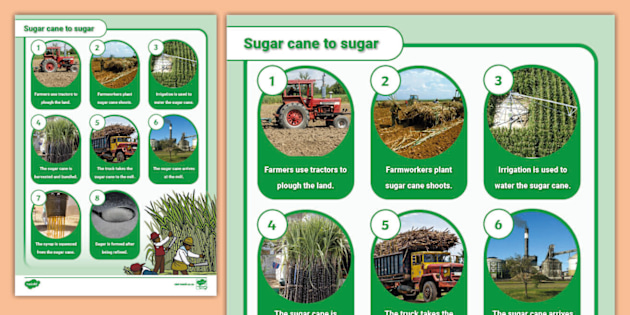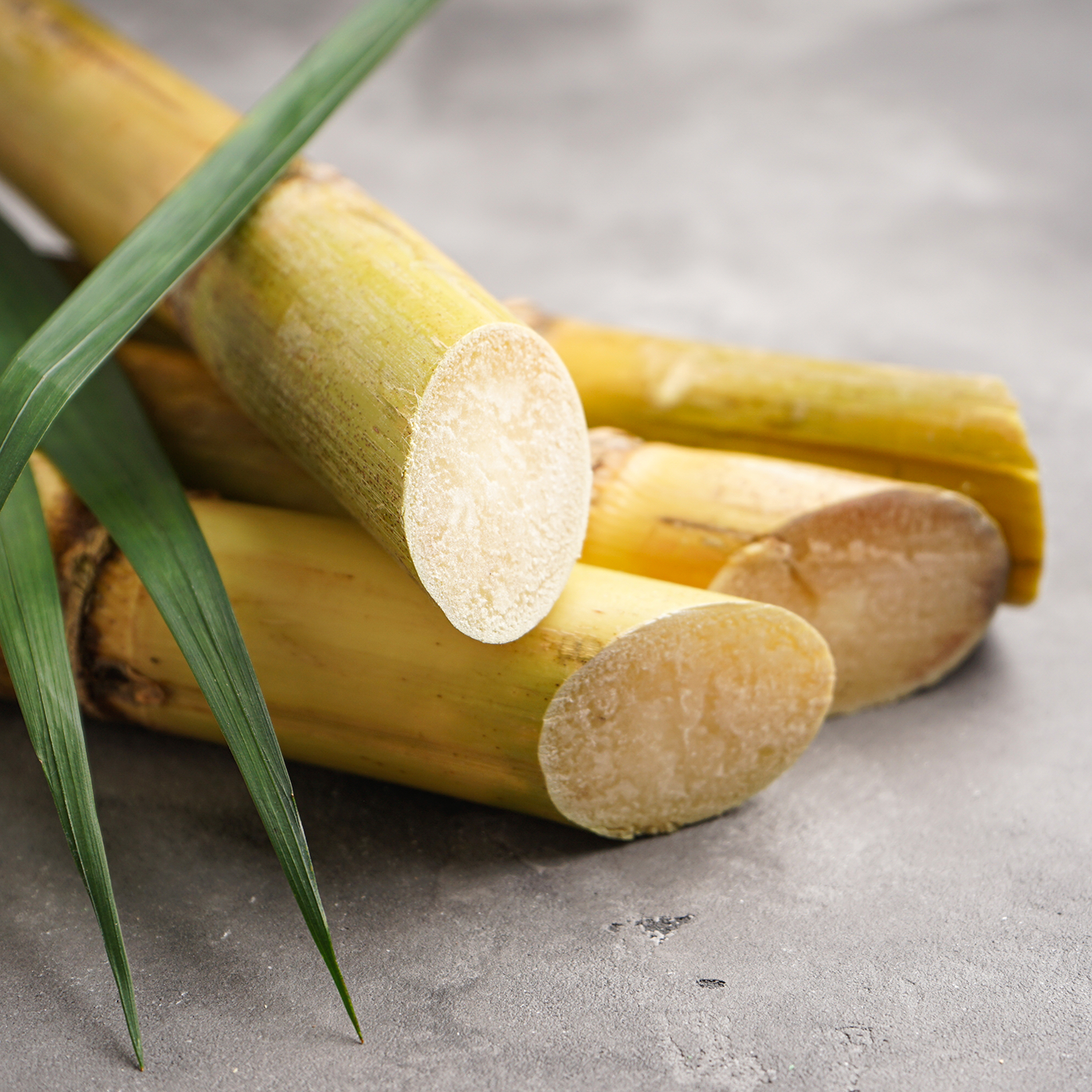All Concerning Sugar Canes: What Are Sugar Canes Made Use Of For and Their Function in Worldwide Farming?
Sugar walking canes function as a keystone of global farming, largely acknowledged for their role in sugar production. They likewise add to the production of by-products like molasses and ethanol. These facets not only support different markets but likewise impact financial stability in country regions. Nonetheless, the growing of sugar canes encounters significant ecological challenges. Comprehending their multifaceted function motivates additional expedition right into their agricultural techniques and sustainability efforts.
The Agricultural Refine of Sugar Cane Growing
Sugar walking cane growing may differ by area, the essential farming procedure remains constant. The initial step includes choosing high-yielding selections suitable for neighborhood climates. Preparation of the soil is necessary, often requiring tillage and the addition of fertilizers to improve fertility. Growing commonly occurs during the rainy season, with farmers making use of either entire stalks or cuttings to establish new crops.As the plants grow, they need persistent treatment, including weed control, pest management, and irrigation, depending upon the environmental conditions. Farmers monitor the sugar cane's development cycle, which typically covers 10 to 24 months, before harvesting. Harvesting is labor-intensive, frequently carried out manually or with specialized machinery, making certain very little damages to the stalks. Adhering to harvest, the cane is transferred to processing facilities. This precise growing process not only sustains regional economic climates but also plays a substantial role in global farming methods, adding to food and energy products.
Sugar Manufacturing: From Walking Stick to Crystal
The journey of sugar production starts the minute fresh harvested sugar walking cane reaches processing centers. The very first step involves cutting the walking cane and washing to prepare it for removal. Using high-pressure rollers, the juice is removed from the smashed cane, causing a pleasant liquid known as sugarcane juice. This juice undertakes information, where impurities are gotten rid of through the enhancement of lime and heat.Next, the cleared up juice is focused by steaming it to produce a thick syrup. This syrup is after that crystallized by cooling down, allowing sugar crystals to create. The crystallized sugar is divided from the staying syrup, referred to as molasses, with centrifugation.Finally, the sugar crystals are washed and dried, causing the familiar granulated sugar (What Are Sugar Canes Used For). This process changes raw sugar walking cane into an item that is important to various culinary and commercial applications, highlighting the significance of sugar in international farming
Biofuels and Sugar Canes: A Sustainable Future
As the world significantly seeks sustainable power remedies, sugar canes have arised as an encouraging source for biofuels. The biomass derived from sugar walking sticks can be exchanged ethanol, an eco-friendly gas choice that noticeably reduces greenhouse gas discharges contrasted to fossil fuels. This process not just gives a cleaner power resource but additionally promotes energy self-reliance for numerous countries.In addition, sugar cane farming sustains rural economies by developing work in both farming and biofuel production industries. Using sugar canes for biofuel production additionally urges agricultural diversification, which can improve dirt wellness and reduce reliance on solitary crops. Additionally, the byproducts of sugar cane processing can be utilized for power generation, in addition adding to a lasting power cycle. As nations venture to fulfill renewable energy targets, sugar canes are poised to play a necessary duty fit an extra lasting future in the biofuel landscape.

The Function of Sugar Canes in Beverage Production
Sugar canes play a significant role in beverage production, serving as a main component in rum and adding to the sweetness of numerous sodas. In addition, their natural juices are utilized in numerous beverages, enhancing flavor and allure. This versatility underscores the importance of sugar canes in the international beverage industry.
Sugar Walking Cane in Rum
Rum production is elaborately linked to the growing of sugar cane, a vital crop that gives the essential fermentable sugars needed for fermentation. This process starts with the extraction of juice from harvested sugar walking canes, which is after that either fermented directly or refined into molasses. Yeast is contributed to transform the sugars into alcohol, causing a diverse variety of rum designs, from light to dark ranges. The geographical region where the sugar walking stick is grown greatly affects the flavor account of the rum, with variables such as soil type and environment playing vital roles. Nations like Barbados, Jamaica, and Cuba are renowned for their rum manufacturing, reflecting the historical and cultural importance of sugar walking stick within the global drink sector.
Soft Drinks Sugar Source

Natural Juice Production Uses
Along with its substantial duty in soft beverage manufacturing, sugar walking stick is additionally crucial in the all-natural juice market. The juice drawn out from sugar cane, understood as walking stick juice, is celebrated for its all-natural sweet taste and distinct flavor account. This juice is generally eaten fresh in different regions, specifically in exotic countries, where it is enjoyed as a renewing drink. Additionally, cane juice acts as a base component in a variety of all-natural fruit juices and shakes, enhancing both preference and nutritional value. Its all-natural homes make it an attractive alternative to artificial sweeteners, appealing to health-conscious customers. Generally, sugar cane's convenience in juice production emphasizes its significance in contemporary beverage offerings Discover More worldwide.
Developments in Sugar Walking Cane Byproducts
Technologies in sugar walking stick by-products are leading the way for lasting options in various markets. Biofuels originated from sugar walking stick supply an alternative power source, while improvements in sustainable packaging are decreasing dependence on traditional materials. These growths highlight the convenience and capacity of sugar walking cane beyond its primary use in drink manufacturing.
Biofuels From Sugar Cane
Exactly how can the results of sugar recommended you read cane add to lasting power solutions? The conversion of sugar walking stick into biofuels provides an encouraging method for sustainable energy. By using the fibrous deposit, called bagasse, manufacturers can create bioethanol through fermentation processes. This bioethanol can work as a sustainable option to fossil gas, lowering greenhouse gas emissions and dependence on non-renewable sources. In addition, molasses, another byproduct, can be fermented to produce biofuels, making the most of resource efficiency. The energy generated from sugar cane not just gives a cleaner gas resource yet additionally improves the general economic stability of sugar production. By integrating biofuel production into their procedures, sugar walking cane markets can play a crucial duty beforehand lasting energy solutions globally.
Sustainable Product Packaging Solutions
Lasting product packaging services are progressively being developed from sugar cane byproducts, showcasing the adaptability of this agricultural staple. Innovations such as biodegradable plastics originated from bagasse, the fibrous deposit left after juice removal, are acquiring grip. These materials offer an eco-friendly choice to standard plastics, decreasing reliance on fossil gas and reducing carbon footprints. In addition, sugar cane-based packaging is compostable, damaging down naturally without hurting the environment. Firms are currently exploring these alternatives to line up with customer demand for sustainability. As awareness of plastic pollution expands, the fostering of sugar cane-derived product packaging is anticipated to climb, positioning sugar canes as a principal in the change to greener product packaging options in different sectors.
Economic Effect of Sugar Walking Stick Farming

Although sugar cane farming has deep origins in lots of economic climates, its economic influence expands much beyond agricultural manufacturing. This plant offers as a considerable source of income for numerous farmers worldwide, particularly in establishing nations where farming is a key livelihood. Sugar walking stick adds to neighborhood economies through task production in cultivation, harvesting, and handling. The industry likewise promotes growth in associated markets such as transport, tools manufacturing, and food processing.Furthermore, sugar cane is an essential player in worldwide trade, influencing global markets and prices. Countries that create sugar walking stick often count on exports to boost their financial security. The spin-offs of sugar walking stick, such as ethanol and molasses, expand profits streams for farmers and add value to the agricultural market. On the whole, the financial ramifications of sugar walking stick farming are profound, impacting not just farmers however likewise entire areas and nationwide economic situations.
Ecological Considerations in Sugar Cane Cultivation
While sugar walking stick farming plays a vital role in numerous economies, it likewise raises considerable ecological problems that can not be ignored. The considerable usage of fertilizers and chemicals in sugar walking cane farming frequently brings about soil destruction and water air pollution. Runoff from these chemicals can pollute neighboring water bodies, harming water communities. In addition, the monoculture methods prevalent in sugar walking stick farming decrease biodiversity, making ecological communities a lot more susceptible to pests and diseases.Deforestation is more another important problem, as land is frequently gotten rid of to make means for sugar haciendas, causing habitat loss for wildlife and raised carbon exhausts. In addition, the high water usage required for sugar cane watering can stress regional water resources, particularly in dry regions. As international need for sugar remains to climb, dealing with these environmental obstacles ends up being crucial to guarantee lasting practices in sugar cane growing.
Regularly Asked Concerns
What Are the Nutritional Perks of Sugar Walking Cane?
The nutritional benefits of sugar walking cane largely include its high carb web content, giving power. In addition, it has vitamins, minerals, and anti-oxidants that may support overall wellness, though small amounts is necessary as a result of its sugar web content.
Just How Does Sugar Walking Cane Affect Citizen Ecosystems?
Sugar walking stick growing can substantially affect neighborhood ecological communities by altering land use, influencing biodiversity, and needing considerable water resources. Furthermore, it might lead to dirt degradation and pesticide overflow, disrupting bordering habitats and wild animals populaces.
What Is the Background of Sugar Walking Stick Cultivation?

Are There Alternatives to Sugar Cane for Sugar Production?
Alternatives to sugar walking cane for sugar manufacturing include sugar beets, corn, and different tropical plants like sorghum and agave (What Are Sugar Canes Used For). These plants supply diverse resources of sweet taste, each with distinct growing requirements and ecological impacts
Just How Do Weather Condition Patterns Impact Sugar Cane Returns?
Weather patterns considerably influence sugar walking stick returns via temperature level fluctuations, rains quantities, and seasonal cycles. Drought or too much rainfall can prevent growth, while excellent problems enhance photosynthesis, inevitably impacting the quantity and high quality of the harvest. The journey of sugar manufacturing starts the moment fresh harvested sugar cane arrives at processing facilities. The taken shape sugar is separated from the remaining syrup, known as molasses, with centrifugation.Finally, the sugar crystals are cleaned and dried out, resulting in the familiar granulated sugar. Rum production is delicately connected to the farming of sugar walking cane, a necessary plant that gives the needed fermentable sugars required for fermentation. In addition, the monoculture methods prevalent in sugar cane farming minimize biodiversity, making ecological communities a lot more at risk to bugs and diseases.Deforestation is an additional crucial issue, as land is commonly gotten rid of to make way for sugar ranches, leading to habitat loss for wildlife and raised carbon emissions. Alternatives to sugar walking cane for sugar production consist of sugar beets, corn, and numerous tropical plants like sorghum and agave.
Comments on “From Farms to Factories: What Are Sugar Canes Used For in Today’s Economy”